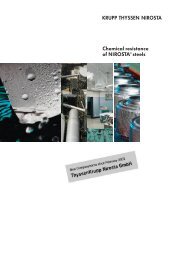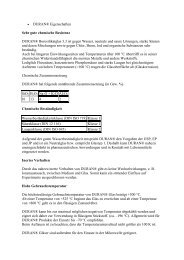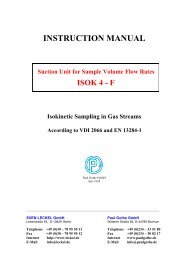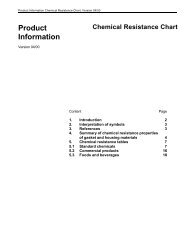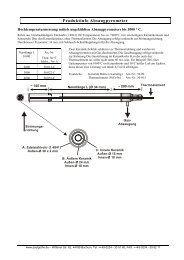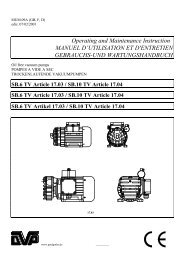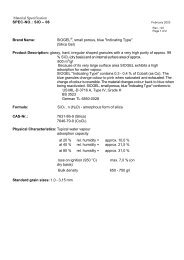Dust-Measurement - Paul Gothe GmbH
Dust-Measurement - Paul Gothe GmbH
Dust-Measurement - Paul Gothe GmbH
Create successful ePaper yourself
Turn your PDF publications into a flip-book with our unique Google optimized e-Paper software.
Alternatively, other measurement devices (e.g. type S Pitot tube) may also be used, provided that they are calibrated against<br />
standardised Pitot tubes.<br />
The temperature and the pressure in the duct shall be measured in order to calculate the actual density of the gas within<br />
±0,05 kg/m 3 , also taking the gas composition into account.<br />
When expressing dust concentrations on a dry basis, and/or where the concentrations shall be expressed in relation<br />
to a reference oxygen concentration, humidity (moisture) and/or oxygen measurements shall be carried out in the<br />
vicinity of the sampling plane.<br />
The filtration device is either located in the duct ("in-stack filtration") or placed outside the duct ("out-stack filtration"):<br />
a) "in-stack" filtration devices, the part of the tubing between nozzle and filter – should be very short, thereby minimising<br />
dust deposits upstream of the filter. Due to available access port dimensions on ducts, the filter diameter is then typically<br />
limited to 50 mm, with a sample flow rate of approximately 1 m 3 /h to 4 m 3 /h. Since the filtration temperature is generally<br />
identical to that of the gas in the duct, filter clogging may occur if the stack gas contains water droplets.<br />
To allow access to all sampling points in the duct, a leak free rigid tube of sufficient length (support tube) is used<br />
downstream of the filter housing for mechanical support of the nozzle and filter housing.<br />
b) "out-stack" filtration devices the part of tubing between the nozzle and the filter (suction tube) shall be of sufficient<br />
length to allow access to all sampling points in the duct. The suction tube and the filter holder shall be temperature<br />
controlled, which provides evaporation of possible water droplets or avoids filtration difficulties related to high acid dew<br />
point gases. Filter diameters between 45 mm and 50 mm are generally used, with associate flow rate of 1 m 3 /h to 4<br />
m 3 /h.<br />
5



